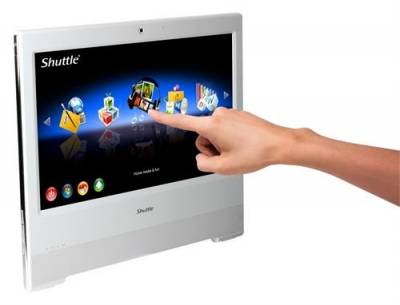Chitika
A new generation of computers
Go to the fifth generation of computers involves a move to new architectures oriented to the creation of artificial intelligence.
It was believed that the architecture of fifth generation computers will have two main blocks. One of them - actually a computer that performs communication with a user block, called "intelligent interface". The task of the interface - to understand a text written in natural language or speech, and thus the condition set out to translate the problem into a working program.
The basic requirements for computers 5G: Create advanced human-computer interface (speech recognition, image); development of logic programming to create knowledge bases and artificial intelligence systems, development of new technologies in the production of computer technology, creation of new computer architecture and computer systems.
The class of supercomputers include computers, which have a maximum at the time of their release performance, or so-called Laptop of the 5th generation.
The first supercomputers appeared already among the second generation of computers (1955 - 1964, see the second generation of computers), they were designed to solve complex problems requiring high-speed computing. This LARC company UNIVAC, Stretch IBM and "CDC-6600" (the family CYBER) firm Control Data Corporation, they have been applied methods of parallel processing (increasing the number of operations performed per unit time), pipelining of commands (when, during execution of one command second read from memory and ready to do) and parallel processing by the processor complex structure consisting of a matrix data processor and a special control processor, which distributes tasks and manages the flow of data in the system. Computers running multiple programs in parallel using multiple chips, are called multiprocessing systems.
A distinctive feature of supercomputers are vector processors, outfitted with equipment for the parallel execution of operations with multidimensional digital objects - vectors and matrices. They incorporated the vector registers and parallel pipelined processing engine. If an ordinary programmer processor performs operations on each component of the vector at a time, then the vector - gives the team once the vectors
Cray-1 computer, on which work was completed in 1976, belongs to the class first сверхвысокопроизводительных vector computers. This class also includes machines Illiak-IV, STAR-100, ASC. Cray-1 performance is 166 Mflop / sec. The computer was built on integrated circuits. Served as 128 instructions. The composition of the structure of a computer Cray-1 was as follows:
1. Main memory of up to 1048576 words, divided into 16 independent units with a capacity of 64K words each;
2. Registered memory, consisting of five groups of fast registers for storage and conversion of addresses for storing and processing of vector quantities;
3. Functional modules, which include 12 concurrent devices that are used to perform arithmetic and logical operations on addresses, scalar and vector quantities.
Twelve functional devices of the machine Cray-1, playing the role of arithmetic and logic converters have no direct connection with main memory. Just as in cars of the family CDC-6000, they only have access to rapid operational registers from which operands are selected and which are recorded in results of operations;
4. The device performs the functions of management of parallel operation of modules, blocks and devices of the CPU;
5. 24-channel input-output organized into six groups with a maximum capacity of 500 000 words per second (2 million bytes per second.)
6. Three groups of operational registers that are directly related to the arithmetic logic unit, called the major. These include eight A-register, consisting of 24 bits each. A register associated with two functional modules that perform the addition (subtraction) and multiplication of integers. These operations are mainly used to convert the addresses of their home and indexing. They are also used to organize the loop counters. In some cases, the A-registers are used to perform arithmetic operations on integers.
Until the mid-80s in the list of the largest manufacturers of supercomputers in the world were firm Sperry Univac and Burroughs. The first is known in particular for its mainframes UNIVAC-1108 and UNIVAC-1110, which are widely used in universities and public organizations.
After the merger of Burroughs and Sperry Univac merged firm continued to support the UNISYS mainframe both lines while maintaining upward compatibility in each. This is striking evidence of the immutable rules, supports the development of mainframes - the preservation of efficiency previously developed software.
In the world of supercomputing is known and the company is Intel. Paragon multiprocessor computers from Intel in multi-family structures with distributed memory are the same classic, as the company Cray Research computers in the field of vector-pipelined supercomputers.


